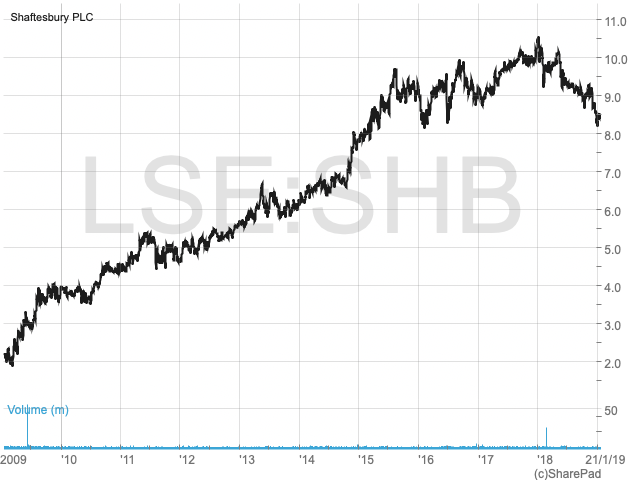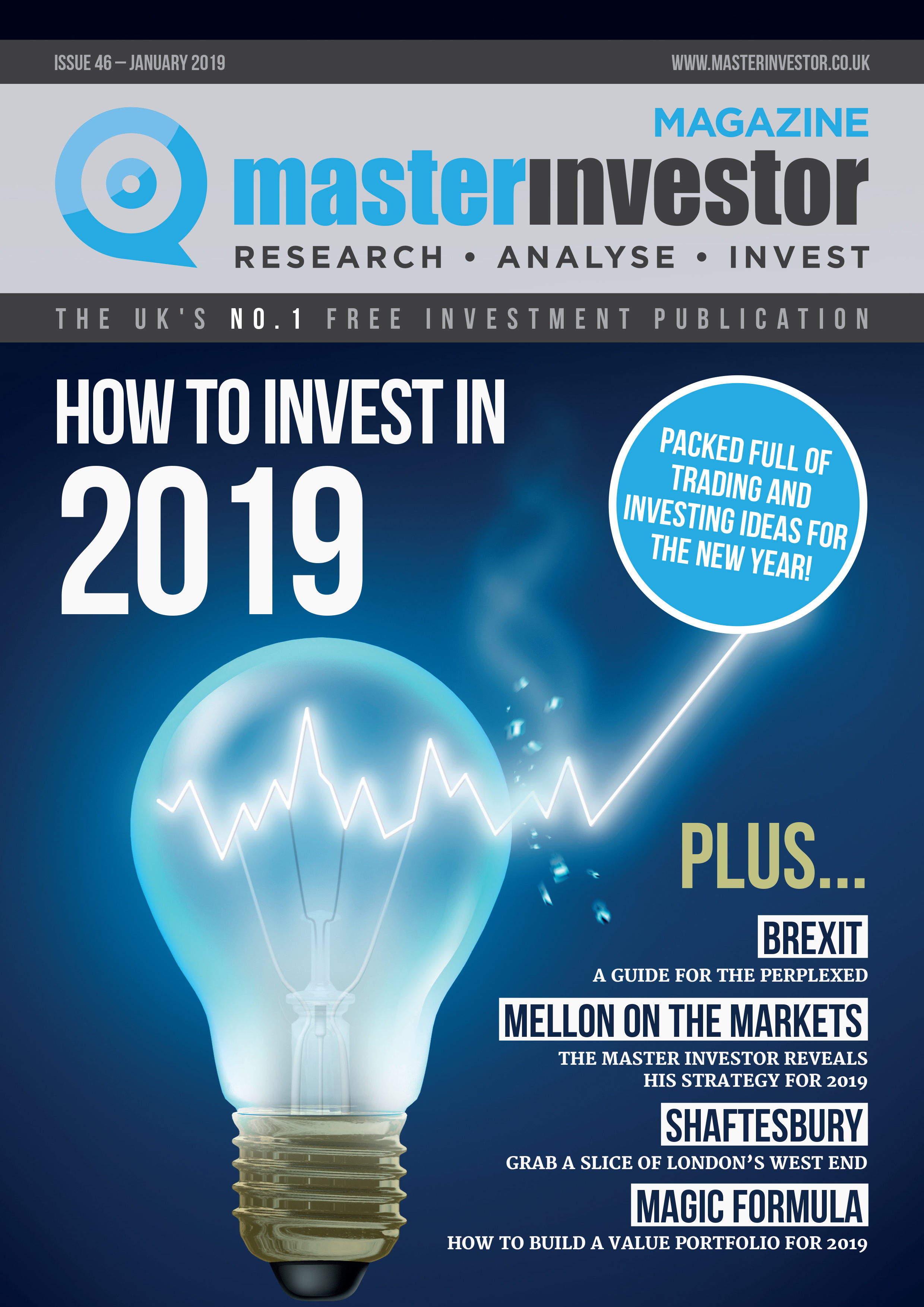Why London’s West End could offer long-term investment appeal

Buying a commercial property stock may not appear to be a sound move at the moment. The UK economy faces a highly uncertain near-term future from a political and economic perspective, with Brexit likely to dominate the news agenda beyond the end of 2018. This could cause investors to demand an increasingly large margin of safety for companies operating within the property sector as a result of its cyclicality and reliance on the wider UK economy.
However, real estate investment trust (REIT) Shaftesbury (LON:SHB) could offer long-term investment potential. The company’s stock price has declined by 15% in the last year, which means that it now trades at less than its net asset value. It has a unique portfolio which is concentrated on London’s West End. The area has a track record of robust performance compared to other locations across the UK, with large visitor numbers and improving transport links meaning that demand is likely to remain robust. Since the supply of property in the area is constrained, rental values may continue to rise.
Although Brexit and global macroeconomic fears could remain in place over future months, a sound balance sheet may allow the business to capitalise on weaker asset prices. As a result, it could deliver recovery potential in the long run.
Growth potential in the heart of London’s West End
| This article was originally featured in Master Investor Magazine
Never miss an issue of Master Investor Magazine – sign-up now for free! |
Although the UK economy may be facing an uncertain period, the West End could offer a relatively resilient outlook. It has a track record of outperforming the rest of the UK economy during challenging periods. As the most visited city in the western world, with over 19 million visitors per year, London’s economy could prove to be more robust than other parts of the UK. Since tourism numbers are due to rise by 3.5% per annum through to 2025, the prospects for the region appear to be positive over the long run. Shaftesbury’s 600 buildings across 14.5 acres provide it with the opportunity to capitalise on the city’s future potential.
The opening of the Elizabeth Line could increase visitor numbers to the West End. It is set to boost capacity on the London transport network by around 10%, with Shaftesbury being well-positioned to benefit. The bulk of its portfolio is within walking distance of Tottenham Court Rd and Bond Street stations, which are Elizabeth Line hubs that are expected to cater to a combined 200 million passengers per year by the mid-2020s. The opening of the Elizabeth Line has been delayed several times, but is now expected to take place in autumn 2019.
Since the supply of properties in the West End is severely limited by planning restrictions, the company’s portfolio is not only unique, it is also near-impossible to replicate. Owners of existing properties are reluctant to sell, which helps to further reduce supply. This pushes the value of existing properties higher as demand rises due to the popularity of the seven-days-per-week economy of the West End. This helps to strengthen the company’s economic moat, and may provide it with a more robust long-term outlook.
Headwinds and opportunities
Given the uncertain prospects for the UK economy, there is no guarantee that the West End will be immune from asset price falls. Although it may be able to outperform a number of other areas of London and the wider UK, Brexit appears to be causing a growing sense of unease regarding the outlook for the economy. This could contribute to weaker consumer confidence, with the retail and leisure sectors having the potential to be hardest hit if consumers become increasingly price conscious over future months.
Added to this is uncertainty regarding the wider global economy. Threats such as the prospect of a full-scale trade war between the US and China may hold back GDP growth in a number of major economies. Similarly, a US interest rate which could rise a number of times in 2019 may threaten the performance of not just the US economy, but also the wider global economy. This could hurt visitor numbers to London and cause knock-on effects for tenants across the company’s portfolio, as well as weaken demand for vacant properties.
Shaftesbury, though, appears to be in a strong position to capitalise on any future weakness for the West End economy. Recent refinancing initiatives have contributed to a fall in the company’s blended cost of debt from 4.9% to 3.2%. It has interest cover of 2.6x, while the weighted average maturity of its debt is over 10 years. A loan-to-value ratio of 22.8% suggests that it has the capacity to increase its debt levels, while it has £225 million in undrawn credit facilities available. This could be utilised if asset prices weaken, in order for the company to take advantage of more favourable conditions through which to build on its existing portfolio. Therefore, even if Brexit and global risks contribute to more challenging prospects for the commercial property sector in London, they could create an opportunity for the business in the long term.
A margin of safety and attractive income growth
| This article was originally featured in Master Investor Magazine
Never miss an issue of Master Investor Magazine – sign-up now for free! |
As highlighted, Shaftesbury has seen its share price decline by 15% in the last year. With its net asset value (NAV) per share increasing by 4.1% in the 2018 financial year, it now has a price-to-book (P/B) ratio of 0.9. This indicates that the stock could offer a margin of safety. Although there is scope for asset prices to fall, the extent of any decline may be limited by the track record of the West End in terms of its resilience. In the long run, it seems likely that London’s commercial property prices will recover from any short-term fall as a result of the capital’s economic, political and cultural significance.
One area where Shaftesbury may disappoint is with regard to its income prospects. It has a dividend yield of 2%, which is below the current rate of inflation. Dividend growth, though, has occurred in each of the last four years. During that time, shareholder payments have increased at an annualised rate of 6.4% on a per-share basis. Given the high demand and limited supply of West End property, further growth in rents could be ahead. The company’s current income has increased at a compound annual growth rate of 5.1% in the last decade, which suggests that over the long run dividend growth may outpace inflation. In the near term, though, the income prospects offered by the stock may be relatively limited.

Political and economic uncertainty in the UK
The political situation in the UK remains very fluid. Between now and the end of March there are likely to be further twists and turns which could include anything from a new Prime Minister being elected, to a new government taking control following a vote of no confidence. There could even be another EU referendum. Whether there is a deal or no deal is also unclear, and all of these issues could impact on investor sentiment. As a result, Shaftesbury’s share price may come under further pressure in future months if, as expected, there are further disagreements within the House of Commons on how best to proceed with Brexit.
However, the economic outlook for the UK may be stronger than is currently being priced into a variety of UK-focused stocks. The IMF forecasts a 1.6% rise in UK GDP in 2019, followed by further growth of 1.7% in each of the years from 2020 until 2022. The 3.7% forecast growth rate for the world economy in 2019 may provide a tailwind for the UK during an uncertain period. Clearly, the impact of Brexit is difficult to quantify due to its unprecedented nature. But the key point for investors could be that there are value investing opportunities on offer among UK-focused shares, provided an investor can accept that volatility may increase, rather than subside, in the near term.
Investment appeal for the long term
London’s West End not only offers long-term growth potential, it may also prove to be more resilient than the wider UK commercial property market. High demand for retail and leisure space due to London’s popularity as a tourism centre could continue to drive rents upward, while a lack of supply as a result of planning constraints may help to support asset values during Brexit.
The planned opening of the Elizabeth Line could further boost footfall in the company’s commercial property locations. Two of the Elizabeth Line’s main hubs are only minutes away on foot from Shaftesbury’s range of retail and leisure space, and this could further strengthen its economic moat, as well as rental growth potential.
| This article was originally featured in Master Investor Magazine
Never miss an issue of Master Investor Magazine – sign-up now for free! |
Even if property prices fall, Shaftesbury seems to have headroom when it comes to borrowing levels in order to capitalise on available opportunities. It has strengthened its balance sheet and has been able to lower its blended cost of debt.
Having fallen in line with the FTSE 250 in the last year, the stock now seems to offer good value for money. It trades below its NAV per share, which indicates that a margin of safety may be on offer. Although its dividend yield is behind that of the wider index (which yields 3%), dividend growth could continue to beat inflation as a result of a long track record of rental growth.
While there are risks facing the business in the form of Brexit and wider concerns regarding the outlook for the global economy, the stock could offer improving returns in the long run. It has a unique portfolio which would be near-impossible to replicate, while its financial strength and valuation indicate that it has investment appeal for the long term.

Comments (0)